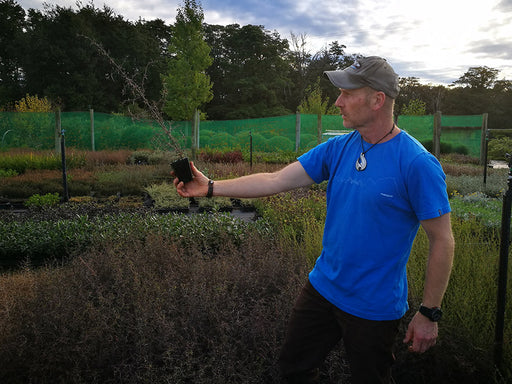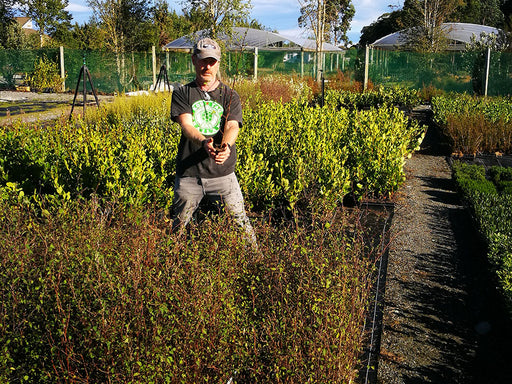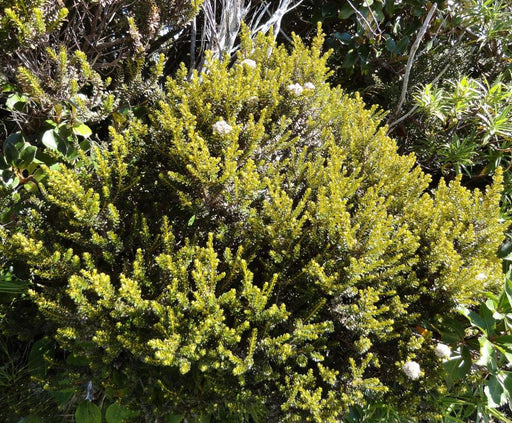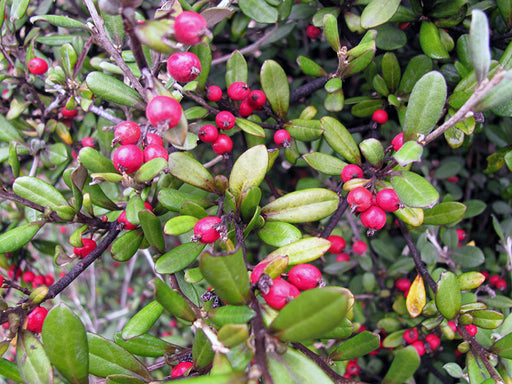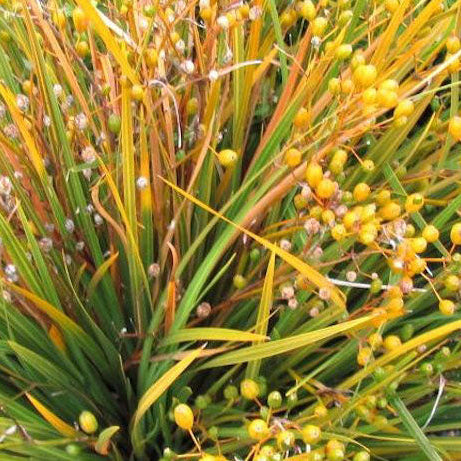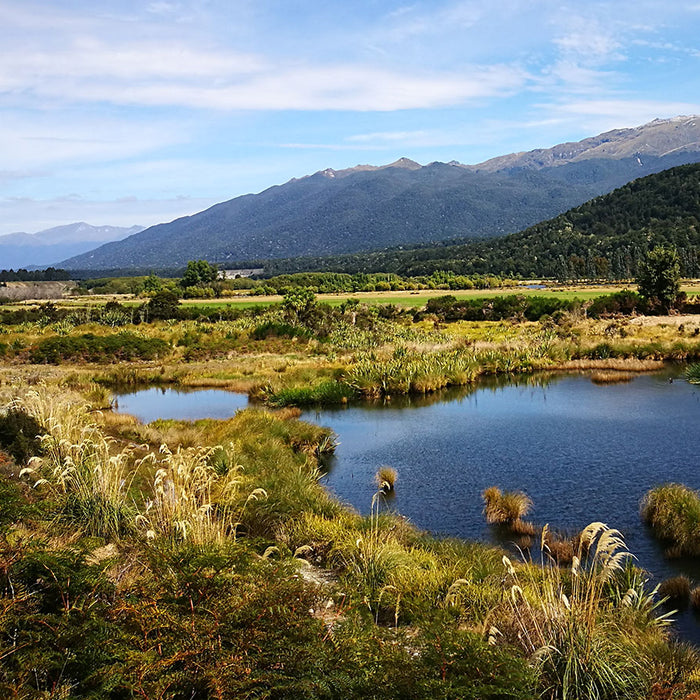Why Frost & Cold Sites Matter — and Why Choose Natives
Frost‑prone and cold-climate sites — such as alpine areas, inland valleys, high‑elevation properties, or frost‑pockets in low-lying areas — present unique challenges for garden plants. These areas often experience frequent frosts, snow, strong winds, rapid temperature fluctuations, and slow soil warming in spring, which can stress or kill plants not adapted to cold conditions. Soil may remain cold for long periods, limiting root activity and plant establishment.


Many exotic species struggle in these environments, suffering frost damage, leaf burn, die-back, or poor growth. By contrast, native New Zealand plants evolved under similar harsh conditions and naturally carry traits that make them ideal for cold sites:
-
Tolerance to freezing temperatures
-
Deep or fibrous roots that recover after frost or snow
-
Compact, low‑growing forms resistant to wind and freeze‑thaw cycles
-
Ability to grow in cold soils and short growing seasons
Using frost‑hardy natives ensures a resilient, low-maintenance garden that withstands winter cold, supports native biodiversity, and thrives where many exotics would fail.
Choosing What to Plant: Match Plants to the Site
Different frost-prone or cold sites require different strategies. Below are common site types and suitable native plants.
Alpine & Subalpine Zones / High‑Country / Exposed Slopes
Challenges: frequent frosts or snow, strong winds, short growing seasons, free-draining or rocky soils.
Good plant choices:
-
Phormium Cookianum — a tough, frost-tolerant flax that survives freezing nights and snow cover, providing bold architectural foliage.

-
Chionochloa rigida (Snow Tussock) — alpine tussock grass, extremely hardy in frost, wind, and cold soils, ideal for stabilising slopes.
-
Compact alpine shrubs and subalpine Hebes — low-growing shrubs that tolerate frost, strong wind, and short growing seasons while providing colour and structure.

Why these work: Their tough foliage, low habit, and fibrous roots make them resilient to frost, wind, snow, and cold soils. They also stabilize slopes and add visual interest in alpine gardens.
Inland Frost-Prone Plains or Valleys

Challenges: cold winters with frost, temperature fluctuations, occasional wind exposure, dry winter air.
Good plant choices:
-
Carex dipsacea — deep-rooted tussock that endures frost, cold, and dry conditions; can help stabilise soil on plains and slopes.

-
Phormium ‘Emerald Gem’ — Compact and dense; handles frost better than large, open-leaved flaxes.
-
Leptospermum scoparium (Mānuka) — resilient shrub that thrives in cold conditions, supports pollinators, and tolerates frost.

-
Astelia Westland — its robust, clumping habit and ability to cope with mixed conditions suggest it may fare reasonably in cooler or variable climates.

Why these work: Their frost resistance, tough stems, and deep roots allow them to survive cold winters while providing shelter and stabilizing soils in inland frost-prone areas.
Sheltered Frost Pockets / Cold Gardens with Some Protection

Good plant choices:
-
Hebe odora — compact, hardy shrub that withstands frost and adds colour and texture to sheltered cold gardens.

-
Coprosma rugosa — a robust, evergreen shrub with dense foliage; highly adaptable and tolerates frost, making it ideal for hedges or low-maintenance shelter.
-
Corokia cotoneaster — evergreen shrub or small tree tolerant of frost, ideal for hedges or screening.

-
Coprosma propinqua — wiry, frost-hardy shrub, perfect for shelter belts or low-maintenance hedging.

Why these work: Their evergreen foliage and structural forms tolerate cold and frost while adding height, shelter, and ecological value.
More “Signature” Frost-Hardy Natives
These species are top performers across cold or frost-prone NZ sites:
-
Hebe ‘Red Edge — a very hardy, compact shrub derived from alpine‑adapted Hebes; able to withstand cold, wind, and exposed conditions, making it good for frost‑prone or exposed sites.

-
Hebe Cupressoides ‘Nana’ — a dwarf, compact, conifer‑like form — adapted to dry/exposed or alpine‑type conditions, which often overlap with frost tolerance and resilience to wind or poor soils.
-
Phormium Tenax (incl. Purple) — durable, frost-hardy, structural foliage.
-
Coprosma propinqua — compact, wiry shrub suitable for cold-exposed sites or shelter plantings.

Practical Planting & Care Tips for Frost & Cold Sites
-
Site Preparation & Soil Improvement

-
Ensure well-drained soil to prevent cold, waterlogged roots.
-
For heavy or poorly drained soil, create raised beds or mounds.
-
Avoid frost-pockets; slightly elevated areas warm faster and reduce frost exposure.
-
Loosen compacted soil and incorporate organic matter to improve root establishment.
-
-
Mulching & Root Protection
-
Apply coarse mulch around plant bases to insulate roots from freezing and freeze-thaw cycles.
-
Mulch should allow drainage; water trapped under mulch can freeze and damage roots.
-
Remove mulch gradually in spring to reduce fungal issues and allow soil warming.
-
-
Planting Time
-
Spring planting (after last frost) gives plants a full growing season before winter.
-
Autumn planting is possible if plants are well-established and hardened off for frost.
-
-
Protection for Young or Sensitive Plants
-
Use temporary frost cloths, windbreaks, or nurse plants to shelter new plantings.
-
Group plants to create microclimates and reduce frost damage to smaller or tender species.
-
Position taller frost-hardy species on the windward side to shield smaller plants.
-
-
Watering & Drainage Considerations
-
Water plants during establishment but avoid waterlogged conditions; saturated cold soils increase frost damage.
-
Ensure soil drains freely and consider raised beds for frost-prone areas.
-
Mulch helps retain moisture while preventing ice formation directly on roots.
-
-
Long-Term Benefits & Garden Value
-
Frost-hardy natives require minimal care once established, surviving cold winters without extra protection.
-
They stabilize soil on slopes and exposed areas, reducing erosion in frost-prone landscapes.
-
Support native wildlife during winter months, providing shelter and food for birds and insects.
-
Over time, frost-tolerant plantings develop into resilient, low-maintenance ecosystems.
-
Planning Your Frost-Tolerant Garden (Anywhere in NZ)

-
Survey Your Site
-
Consider altitude, frost risk, wind exposure, soil type, and drainage.
-
Identify frost-pockets or naturally sheltered areas to determine suitable planting zones.
-
-
Select a Mix of Plant Types
-
Combine frost-hardy tussocks, low shrubs, medium shrubs, and small trees for structural diversity.
-
Use tall species like Kānuka or flax as shelter for smaller plants.
-
-
Prepare the Soil
-
Improve drainage, loosen compacted areas, and mulch to protect roots from frost.
-
-
Plant in the Right Season
-
Preferably spring after last frost, or autumn if plants are sufficiently hardened.
-
-
Provide Protection During Establishment
-
Temporary frost cloths, windbreaks, and grouped plantings reduce frost damage to young plants.
-
-
Develop a Resilient, Layered Planting
-
Use a mix of low, mid, and tall plants to reduce wind chill, stabilize soil, and provide shelter.
-
Over time, the garden becomes a frost-tolerant, self-sustaining ecosystem with visual and ecological value.
-










